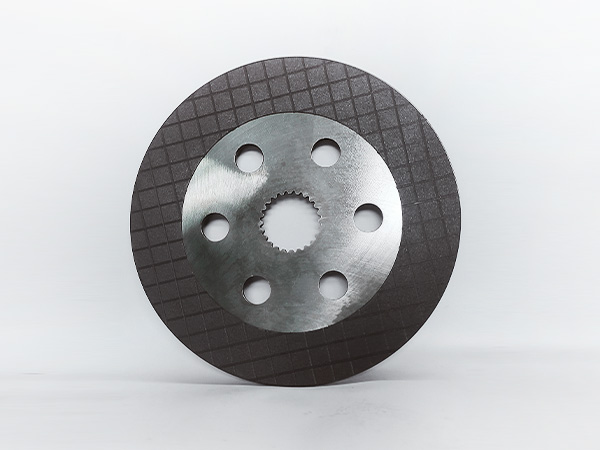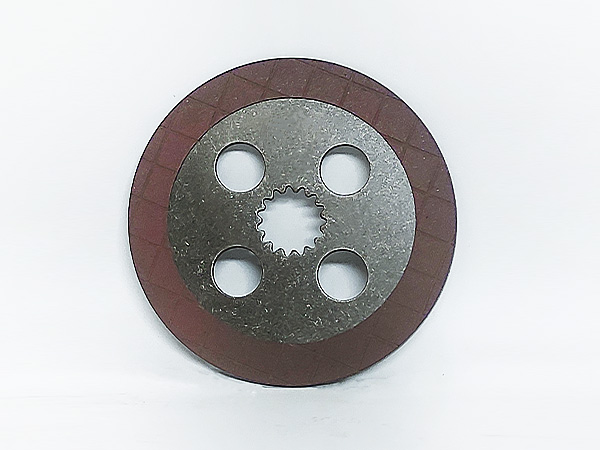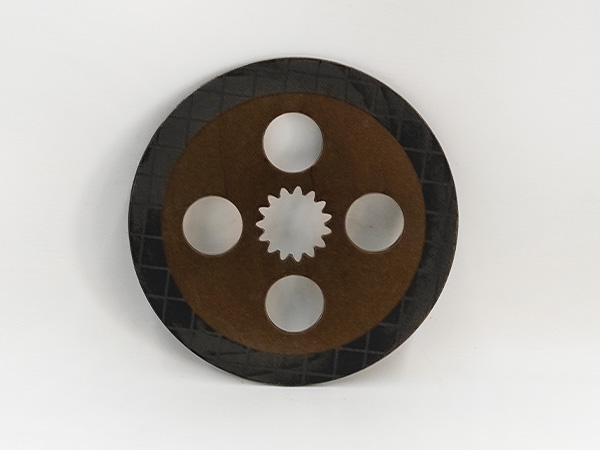The clutch disc is a composite material with friction as its main function and structural performance requirements. Tractor friction materials are mainly used to manufacture brake friction discs and clutch discs. These friction materials mainly use asbestos-based friction materials. With the increasing requirements for environmental protection and safety, semi-metal friction materials, composite fiber friction materials, and ceramic fiber friction materials have gradually appeared.
Since friction materials are mainly used in the manufacture of brake train and drive train parts on tractors, a sufficiently high and stable friction coefficient and good wear resistance are required. So how do we judge the performance of the clutch friction disc? In response to this problem, the tractor clutch manufacturer gave us a detailed explanation.

1. Appropriate friction coefficient
The friction coefficient is the most basic parameter of the friction material, which determines the basic braking torque of the brake disc. The national standard strictly requires manufacturers to indicate the coefficient of friction on the packaging. The friction coefficient must be appropriate. Too high will cause wheel lock, direction loss and burning during braking, while too low will result in too long braking distance.
2. Reliable security
Brake discs will generate instantaneous high temperature when braking, especially at high speed or emergency braking. At high temperature, the friction coefficient of the friction disc will decrease, which is called thermal recession. The level of thermal decay determines the safety in high temperature conditions and emergency braking.

3. Satisfactory comfort
Comfort is a direct reflection of friction performance, including braking feel, noise, dust, smoke, odor, etc. With the increase of private cars and the improvement of people’s living standards, on the basis of satisfying the basic premise of safety, comfort has increasingly become an important indicator of friction discs.
Among the comfort indicators, people are often most concerned about the noise of the brake discs. In fact, noise is also the most difficult problem for all friction material manufacturers to solve. The noise is caused by abnormal friction between the friction plate and the friction disc. The reasons for the noise are very complicated. The braking force, the temperature of the brake disc, the vehicle speed and the weather conditions may all be the reasons for the noise.
In addition, the causes of noise in three different stages of brake initiation, brake implementation and brake release are different. If the noise frequency is between 0 and 500Hz, it will not be felt in the car, but if it exceeds 1500Hz, the braking noise can be clearly felt.

4. Reasonable longevity
Service life is a product indicator that everyone is generally concerned about. Usually the brake discs can guarantee a service life of 30,000 kilometers. In order to meet the needs of different users, brake disc products are also developing in diversification, and two series of “safety” and “comfortable” have emerged to meet different customer needs. Among them, it provides better cost performance while meeting the requirements of safety and basic comfort.
Brake discs and brake shoes are wearing parts and safety parts that need to be replaced regularly. When the thickness of the brake discs is worn to a certain extent, it must be replaced. At this time, the electronic or mechanical alarm of the vehicle will remind the owner to replace it by means of a warning light or noise. Generally speaking, the wear degree of the brake discs or brake shoes in the same axle direction is the same and needs to be replaced at the same time.


